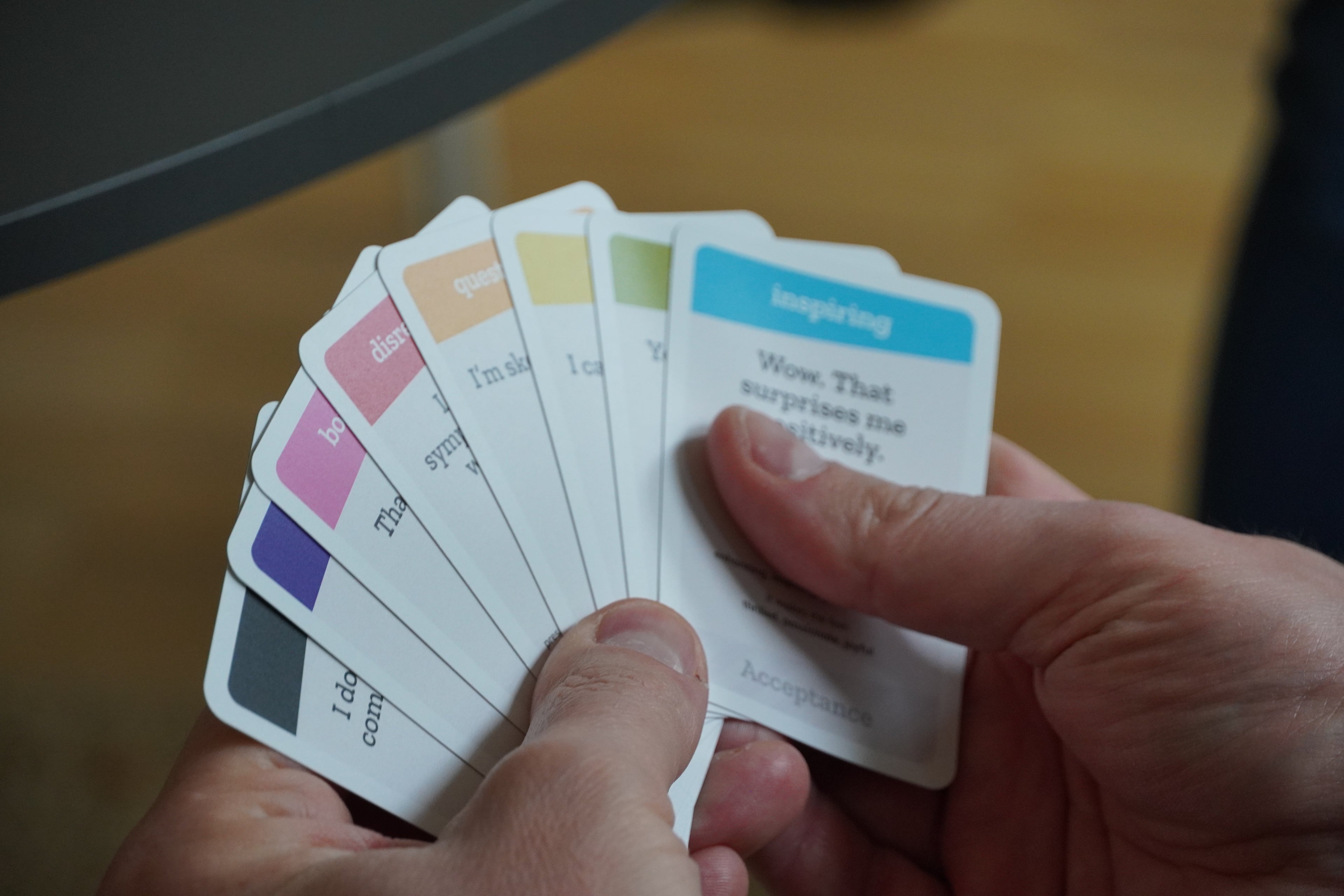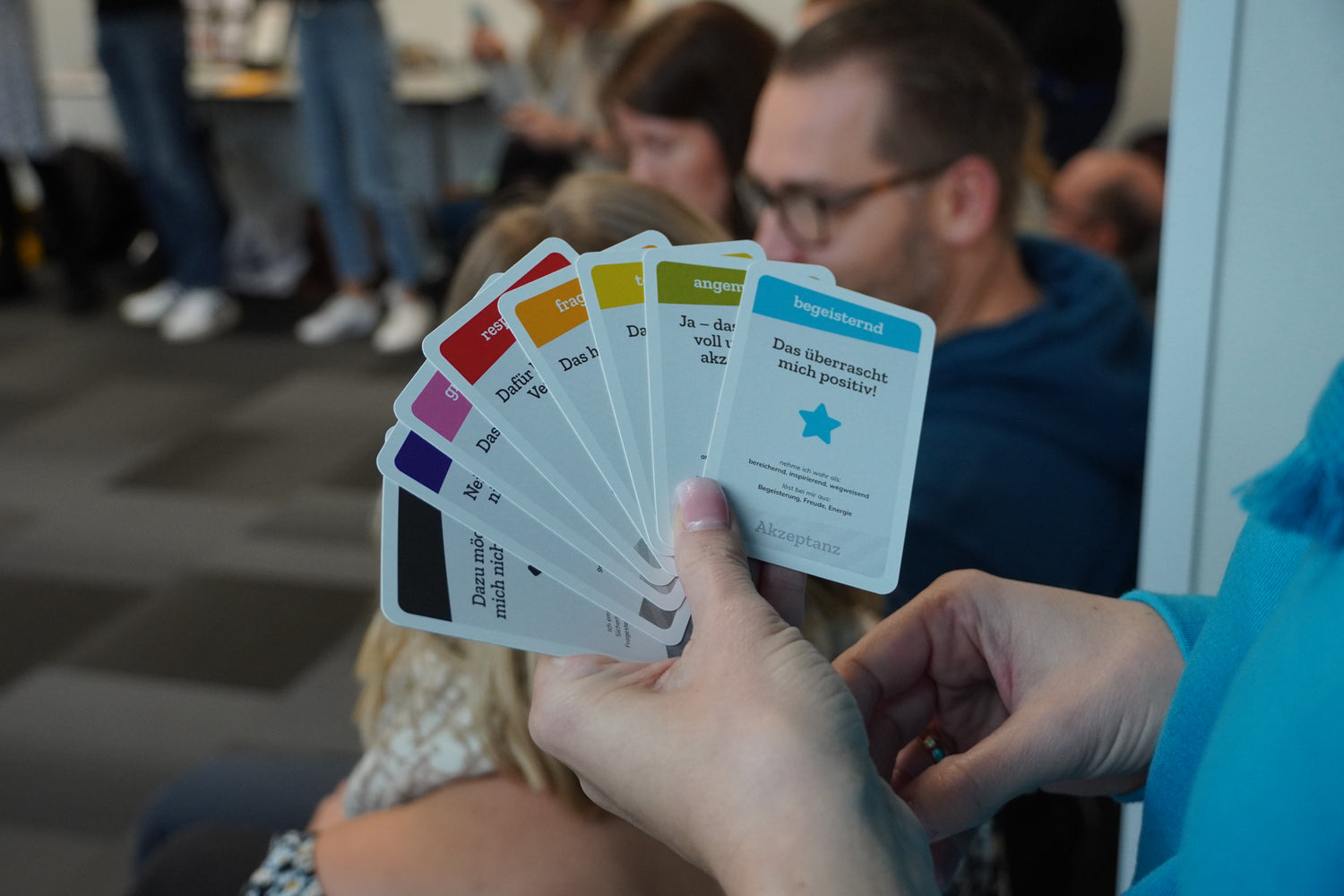
Toleranz-Poker
Toleranz-Poker ist ein spielerischer Ansatz für Teams, um unentdeckte Konflikte aufzudecken und besprechbar zu machen. Konflikte werden damit entschärft, bevor sie eskalieren können.

Starte jetzt mit Toleranz-Poker
Sichere dir jetzt deine eigene Ausgabe.
Damit förderst das Vertrauen im Team, stärkst aktiv das Verständnis aller Beteiligten untereinander und bringst dich und dein Team auf ein neues Level der Zusammenarbeit.

Wie funktioniert Toleranz-Poker?
Toleranz-Poker ist ein Kartenspiel, dass dabei hilft, unterschwellige Konflikte sichtbar zu machen.
Es versetzt die Beteiligten in die Lage, ihre emotionale Reaktion auf eine bestimmte Situation auszudrücken und vergleichbar zu machen. So können Empfindungen verbalisiert und emotional aufgeladene Debatten vermieden werden.

Toleranz-Poker Facilitation-Training
Du möchtest besser verstehen, wie du das Spiel in deinem Team oder deiner Abteilung wirkungsvoll anwenden kannst? Du suchst nach Inspiration für gute Moderation und Konfliktbewältigung?
Dann schau dir unser Facilitation-Training mal genauer an.